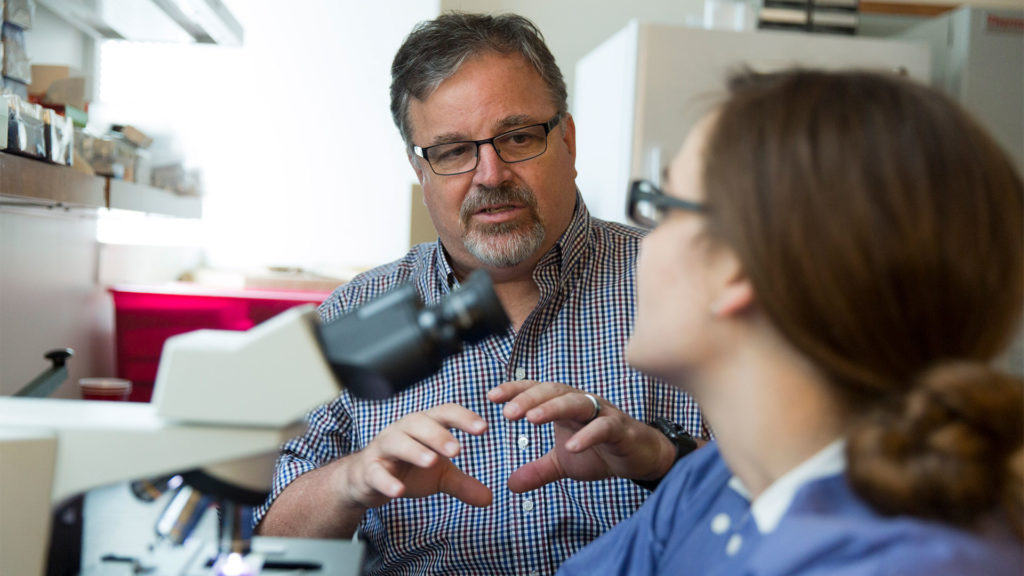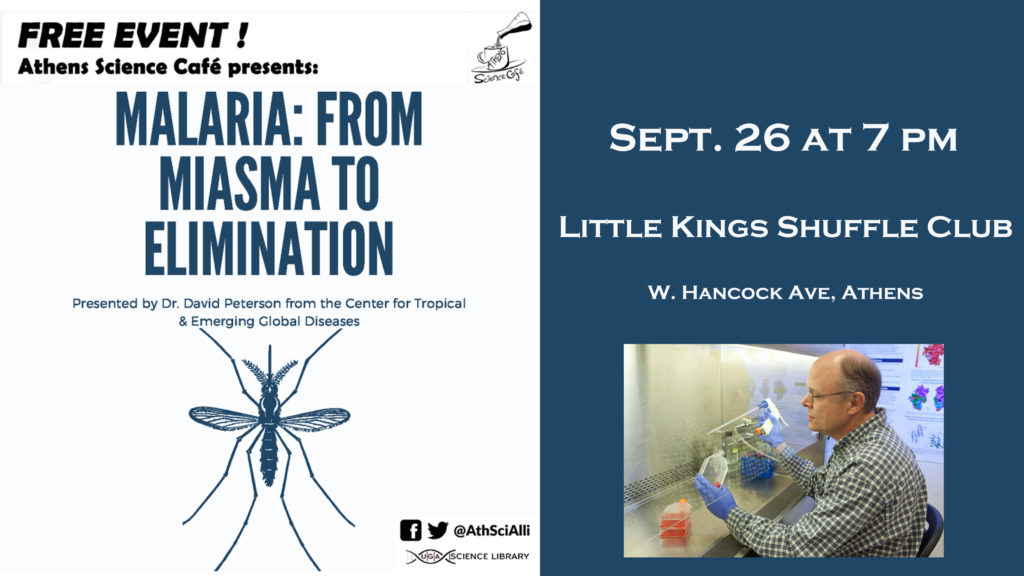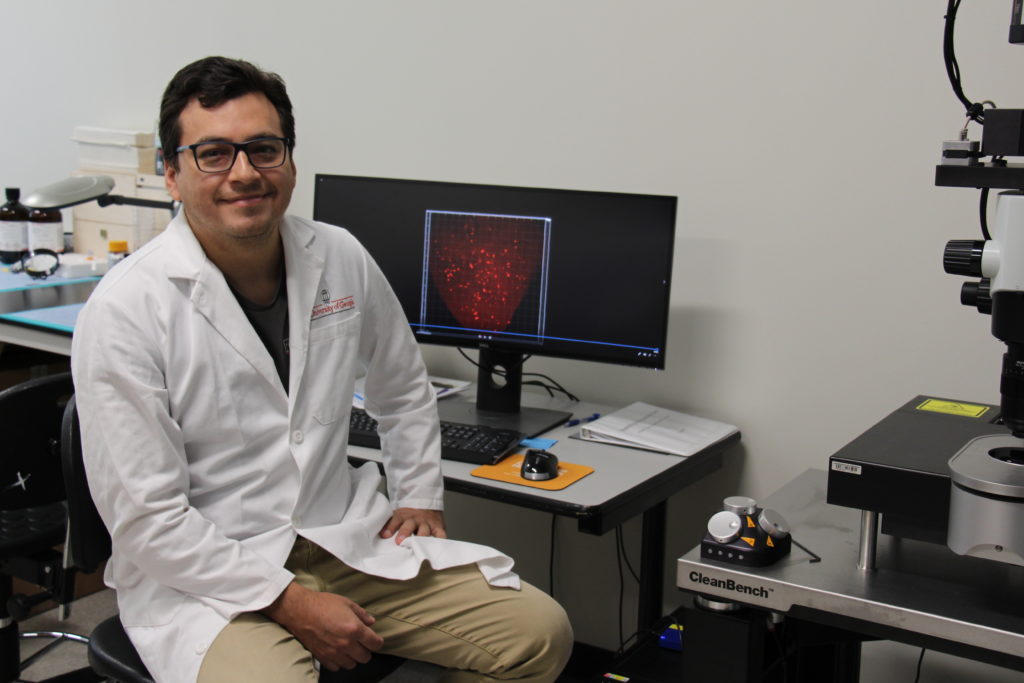Trainee Spotlight: Edwin Pierre Louis
Edwin Pierre Louis is a pre-doctoral trainee in the laboratory of Dr. Drew Etheridge. Originally from Haiti, he immigrated to the US to attend the University of Florida (UF), where he graduated with a Bachelor of Science in Biochemistry Molecular Biology. After earning his degree at UF, Edwin accepted a position as a biological scientist in the UF Center of Excellence for Regenerative Health Biotechnology, with a focus on gene and cell based therapeutic development, where he worked for three years. There, he first discovered his love of host-pathogen interactions as a biological scientist working under the supervision of Dr. Richard Snyder for the component Florida Biologix at this center and later merged to create Brammer Bio which was subsequently acquired by Thermo Fisher Scientific. During this time in industry, he realized that to improve his scientific capacities he would need to continue his studies by pursuing a graduate degree. As part of his preparations to apply to a graduate program, he joined the UGA post-baccalaureate PREP program whose mission is to prepare students interested in a graduate degree for the application process. During this time, he was granted the opportunity to join Dr. Michael Terns’ laboratory for a year where he investigated the molecular mechanism of CRISPR-Cas based viral defense in Streptococcus thermophilus as well as prime adaptation events in the type II-A CRISPR-Cas system.
Since attending UGA, Edwin has been awarded both the Gateway to Graduate School Bridge Program and the Graduate Scholars Leadership, Engagement and Development Program (GS LEAD) scholarships sponsored by the National Science Foundation (NSF).
What is your research focus and why are you interested in the topic?
Broadly, my key research interests center around how organisms like viruses and parasites manipulate their host cell in order to grow and propagate. My current project is focused on elucidating how the protozoan pathogen Toxoplasma gondii is able to use secreted protein effectors to manipulate its host cells functions.
Why did you choose UGA?
I chose to study at the University of Georgia, in part, because of my excellent post-baccalaureate experience in the PREP program. It was evident from my interactions that UGA excels at fostering a productive relationship between students and faculty. Regardless of any faculty member’s relationship to the students, there was a sustained willingness for faculty to give of their time in order to see the students succeed. I also decided to pursue my PhD at UGA because of the cutting-edge research and in particular the collection of outstanding parasitologists that is uniquely found in the Center for Tropical and Emerging Global Diseases (CTEGD).
What are your future professional plans?
As I continue my graduate studies on host pathogen interaction, I plan to do some post-doctoral trainings to augment my apprenticeship and ultimately become an independent scientist to lead my own research group. I also hope to be able to give back to the local community that has contributed so much to my own personal success by donating my time and knowledge to mentor young budding scientists especially those from underprivileged homes and/or underdeveloped countries.
Support trainees like Edwin by giving today to the Center for Tropical & Emerging Global Diseases.
[button size=’large’ style=” text=’Give Online’ icon=” icon_color=’#b80d32′ link=’https://ctegd.uga.edu/give/’ target=’_self’ color=” hover_color=” border_color=” hover_border_color=” background_color=” hover_background_color=” font_style=” font_weight=” text_align=’center’ margin=”]






 Dr. Fernando Sanchez-Valdéz, from Salta, Argentina, completed a Ph.D. in Molecular Biology at the Faculty of Pharmacy and Biochemistry at the University of Buenos Aires, Argentina in 2014. After his Ph.D., he completed a postdoctoral fellowship in
Dr. Fernando Sanchez-Valdéz, from Salta, Argentina, completed a Ph.D. in Molecular Biology at the Faculty of Pharmacy and Biochemistry at the University of Buenos Aires, Argentina in 2014. After his Ph.D., he completed a postdoctoral fellowship in